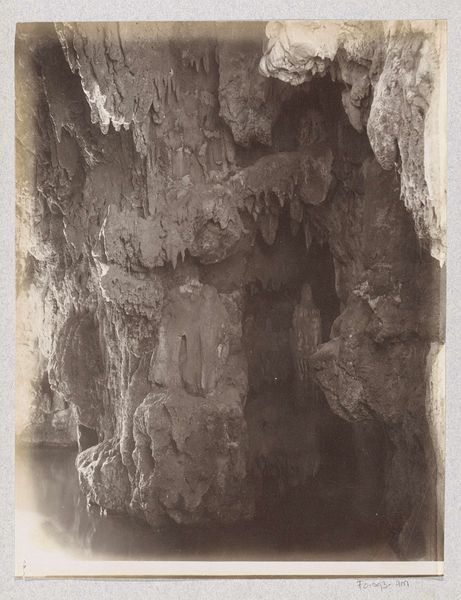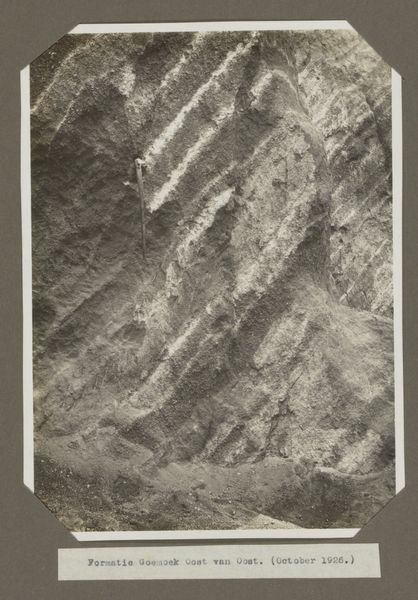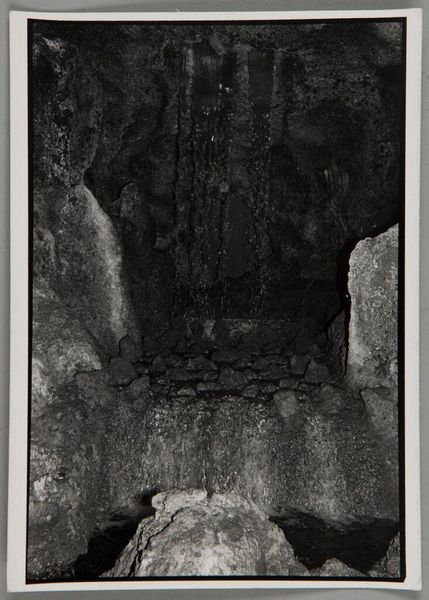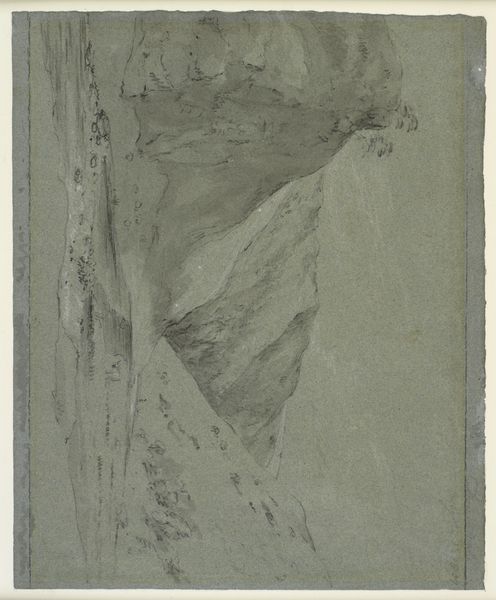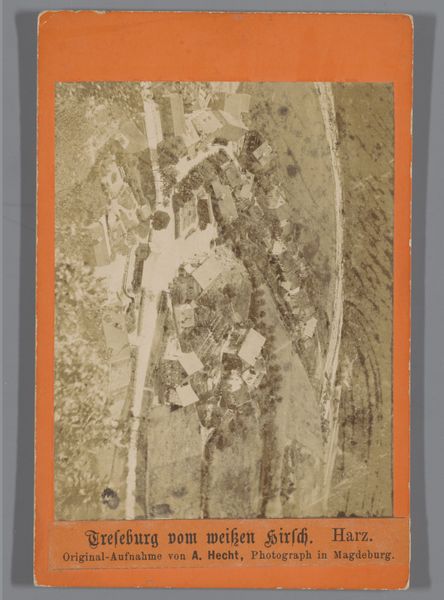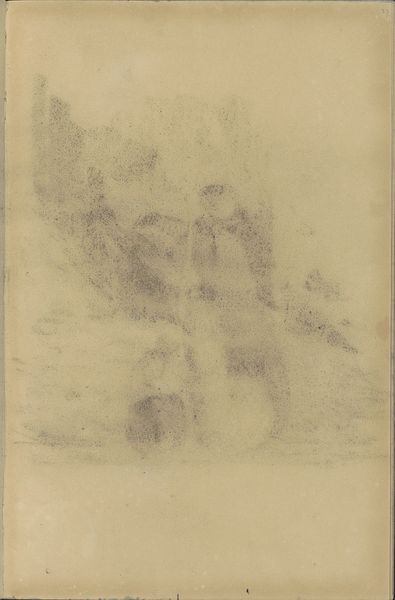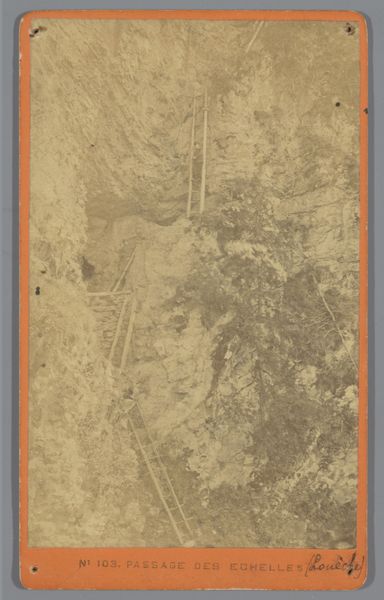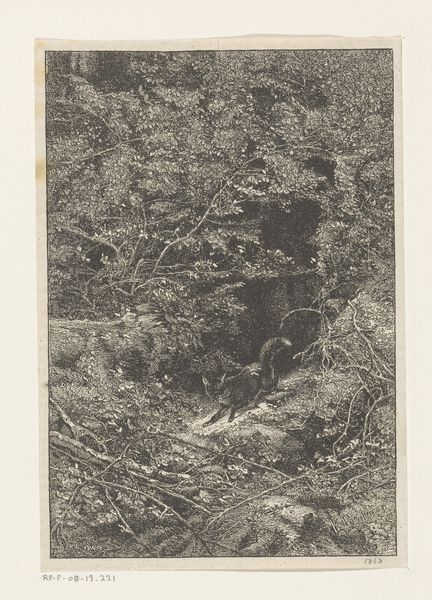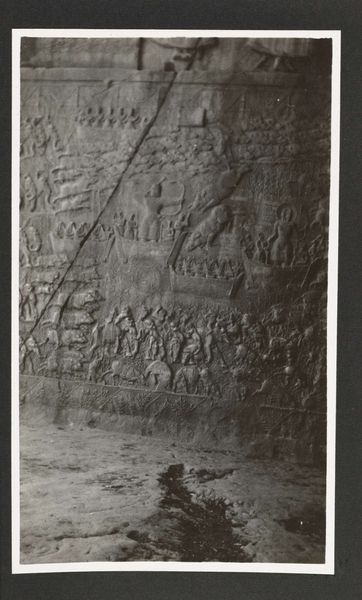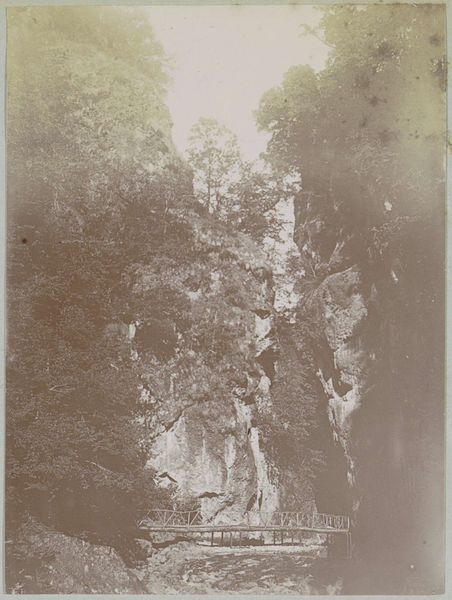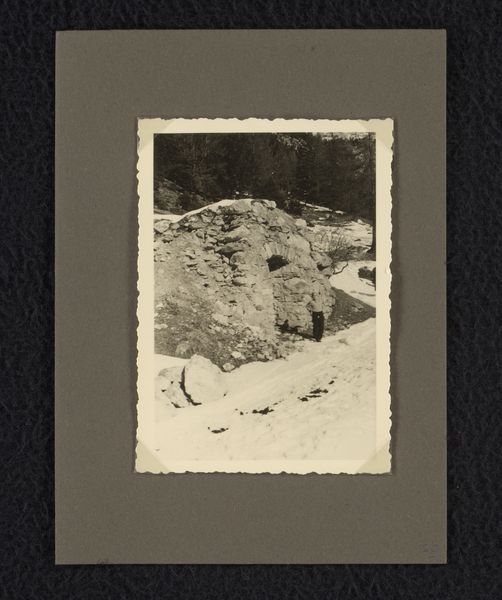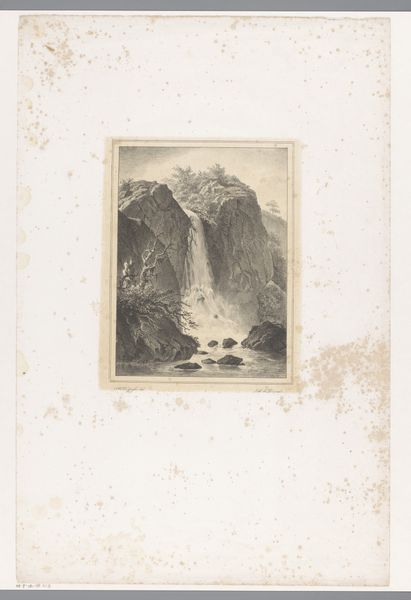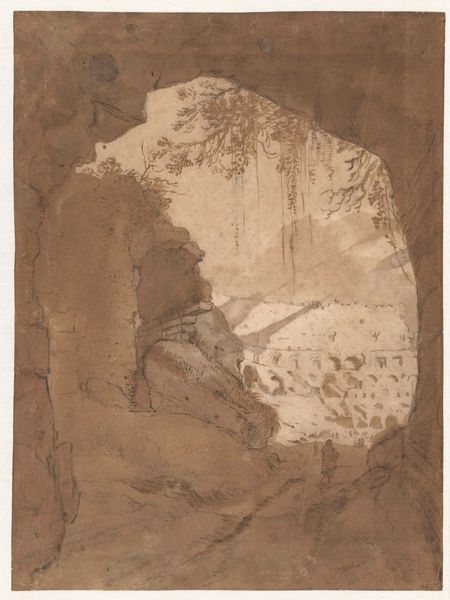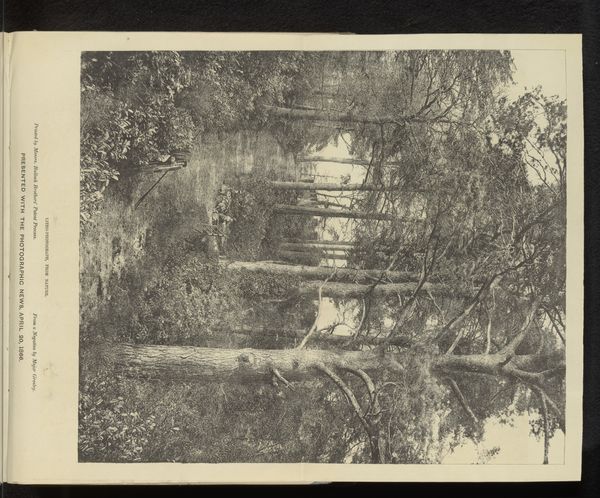
photography, gelatin-silver-print
#
landscape
#
photography
#
gelatin-silver-print
#
realism
Dimensions: height 168 mm, width 109 mm
Copyright: Rijks Museum: Open Domain
Curator: Gerrit Hubers created this gelatin-silver print sometime between 1894 and 1927. The title suggests it’s called "Rotsblok met opschrift, vermoedelijk een gedenksteen", or “Boulder with inscription, presumably a memorial stone.” Editor: It gives off such a solemn feeling. That weathered stone seems so ancient. Curator: It does evoke a sense of the past. The inscription hints at its purpose—perhaps it marks a significant historical event or commemorates a person. Editor: You know, looking closer, the inscription is barely legible; the stone looks so rough. The act of carving letters into such an intractable material must have required an incredible amount of labor. Did that stone come from somewhere special? Curator: Possibly a locally sourced material, connecting the monument directly to the region's geological and cultural identity. Memorials like these often serve as focal points, solidifying community identity. It is presented to us as a Realist and landscape style artwork through photography. Editor: Do you think that inscription was carved quickly out of need or carved and created precisely as a carefully thought and placed project for remembrance and legacy? I find that material is an integral communicator of memorial culture. Curator: Interesting question. The stone's realism and unidealized nature probably played into creating a permanent place in memory as well, creating a social landscape out of materials. Editor: The thought and skill necessary to manipulate that material shows the value of how we communicate permanence or ephemerality of ideas or of people in relationship with nature, even within something as solid as stone and a simple inscription. Curator: A beautiful point. I see it as a document of a moment, capturing not just a physical object but the social and historical context surrounding it. It gives the viewer a view of a bygone world with the impact still here. Editor: Exactly! Thinking of the people, time and the location that brings everything together offers insights to memorial art production we would have never discovered without seeing all together.
Comments
No comments
Be the first to comment and join the conversation on the ultimate creative platform.
